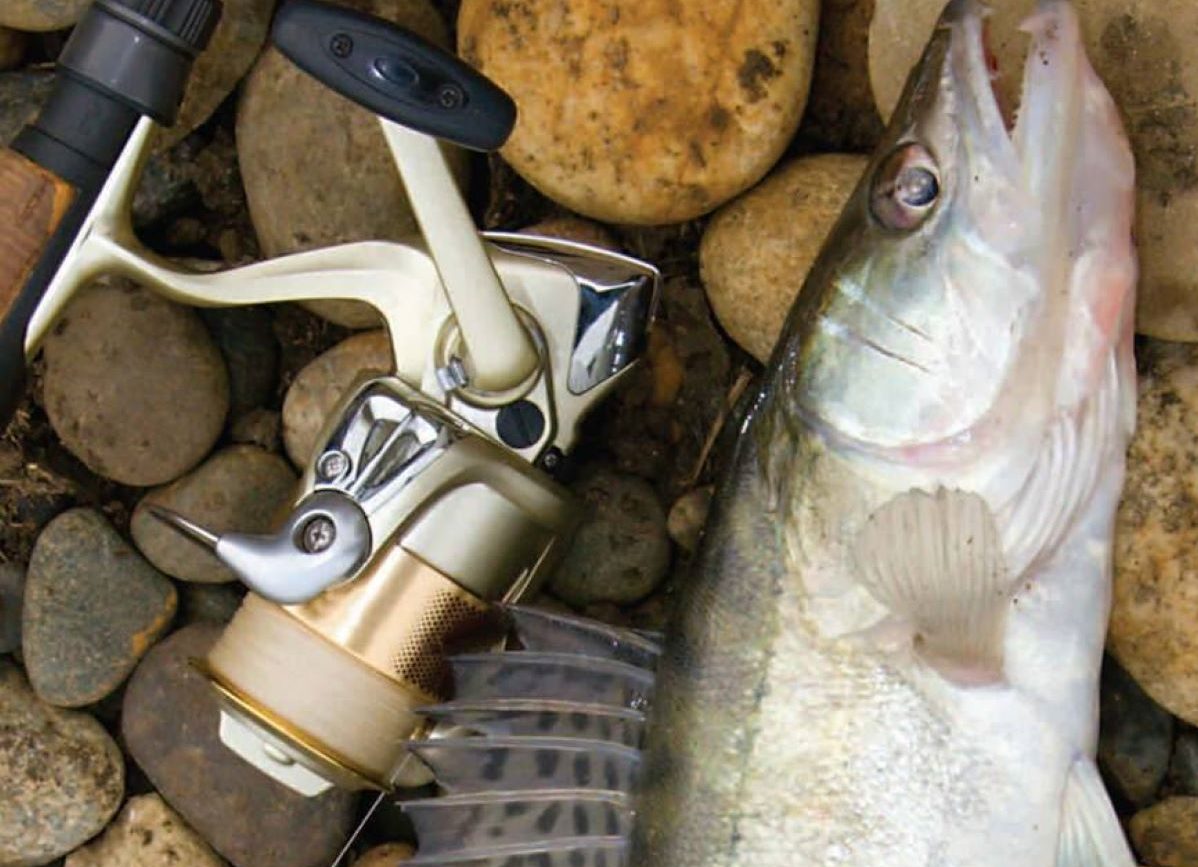Midwest Vacation Walleyes

Midwest Vacation Walleyes
When asked if I would write a feature for the July Iowa Sportsman magazine about Midwest Vacation Walleyes, I jumped at the chance. Wow! Then as I began to make my four or so choices, I began to struggle. I mean there are hundreds of deserving places in the Midwest to fish walleyes: Michigan, Wisconsin, Minnesota, Iowa, South Dakota, North Dakota…where do you start? Top walleye lakes and rivers in all of these states! What a dilemma. My four choices would probably be way different than another walleye angler. That’s what makes walleye fishing in the Midwest such great fun.
What I did was limit my choices to a destination that I could travel to in a day’s drive that featured notoriously excellent walleye fishing, accommodations, baitshops and guide services if needed. I then picked ones that I had success fishing myself. Most often, my fishing trips have been with my son, Curt. These are my choices: Big Spirit Lake, northwest Iowa; Lake of the Woods, Northwest Angle Minnesota; Missouri River reservoir system, South Dakota and the glacial lakes of northeast South Dakota.
Northwest Iowa’s Big Spirit Lake, which is a well-known walleye destination. Walleyes can be found trolling or drifting the basin with spinners and a nightcrawler or a leech or pulling crankbaits and planer boards (either shallow or deep). However, from late June, when the weedbeds become established, fishing these weedbeds lead to dynamite action. Key depth can be anywhere from 5-10 feet of water. However, it takes patience and time to find the active walleyes. Once you do, however, you can set up a drifting or trolling pattern.
The idea is to keep the spinner in the strike zone but not in the weeds. Optimum speed is 1.2-1.5 mph, and you are looking for aggressive, reactionary biters. When the “bite over the weeds” really gets going and you find the honey stretch, we will often have 20 fish days with fish ranging from 14” to 20-23” fish. Expect to catch a mixed bag: perch, crappies, bluegills, largemouth bass and northern pike.
The Iowa Great Lakes area hosts several excellent baitshops: Stan’s Bait and Tackle (north Milford), Oh Shucks (HWY 86 on southwest side of West Okoboji) and Kabele’s Trading Post (north end of the town of Spirit Lake). All three can also give updated fishing reports and guide service options.
My second choice is the Lake of the Woods (Minnesota/Canada), which is nearly nine hours north of Iowa. Over 70 miles long and wide and containing more than 14,000 islands and 65,000 miles of shoreline, Lake of the Woods is often referred to as the “Walleye Capital of the World.” Most of the resorts are located across the southern end of the lake, but they are also extremely busy. Instead I head to the Northwest Angle on Lake of the Woods and headquarter out of Jake’s Northwest Angle Resort (www.jakesnorthwestangle.com).
I’ve both ice fished and summer fished with excellent success. There is a special intrigue about this northern most point of our lower 48 states. Maybe it’s that to get there, you must first travel from Minnesota into Canada and then back into the United States-the Northwest Angle. Or Maybe it’s because it is so isolated and laid back, a place where time seems to stand still. Maybe it’s because of its incredible beauty. Maybe it’s because it is such a world-class fishery. Those are the very reasons I pick the Northwest Angle.
The nice thing about Jake’s is that this four-generation family resort has great access to the Angle waters. Currently owned by Paul and Karen Colson, it is truly a family destination with recently renovated cabins, a marina with slip availability, boat rentals and guide options. Over the many times my son and I have traveled to the Angle, we have developed a close friendship with guide Big Mike Jenison, who has guided for Jake’s for over 20 years. Having Big Mike guide us saved us a whole lot of grief.
For example, on our last summer trip, instead of fishing the Minnesota portion of the Lake of the Woods, Big Mike told us the bite was north into Canadian waters, so we each purchased a Canadian Sport Fishing license.
Was it worth it? Oh my, yes. Over the three days, we boated 150 walleyes/sauger, several perch, three smallmouth bass and a northern pike. Most of the walleyes ran in the 14-18 inch size with our largest just under 23 inches. In addition to a lot of catch-and-release, we were able to eat two meals of fish, along with each of us taking home our four-fish possession limit. The perch were 13-14 inchers.
The normal presentation is jigging a 1/4 to 3/8 inch jig tipped either with a white Berkley 3” Power Minnow or dead-in-salt spottail shiners. We couldn’t use live shiners in Canadian waters unless you get your live bait, in this case minnows, from a Canadian bait dealer. However, they can only be used that day and must then be disposed of. So, they go with the preserved bait. The other option is pulling spinners and bottom bouncers.
The Missouri River Reservoir system. Talk about an expanse with four reservoirs and dams (north to south). My top two for late June through the summer are Lake Sharpe from Ft. Thompson north of Chamberlain to Pierre and Lake Oahe that runs from Pierre all the way through northern South Dakota to Bismarck, North Dakota. I have to admit that I spent a lot of my early adulthood fishing both of these reservoirs. There are excellent lodges and motels located all along the east side of the river.
One of our main places to stay is in Chamberlain, South Dakota. When it’s just a fishing outing, we stay at Allen’s Hillside Hotel, but when it becomes a family trip, we stay at Cedar Shore Resort. The nice thing about Allen’s is that Charley’s Restaurant and Bar is right next door, and they will fix your fish for you! Plus, Allen’s has several excellent guides on hand, and their catch rate is over 99 percent. They also have an excellent supply of tackle and bait and are more than willing to share the general hotspots. They will provide a map with key spots listed on the map.
Even though Chamberlain is located on the shores of Lake Francis Case and the early spring through mid-June walleye bite is good, by July, most anglers are heading above the dam at Fort Thompson and fishing Lake Sharpe. Bottom bouncers and a Lindy rig plain hook or a spinner (gold, chartreuse, silver, pink and the baitfish spinners in gold perch or gold shiner) hooked with a nightcrawler or minnow work the best, along with Berkley plastics like the Berkley Power Minnow. A friend of mine, guide Dave Henning, has designed a spinner with a slow death hook called the Death Fin Spins (chartreuse, gold, pink and silver) that work great in the summer. They can be found at www.henningstackle.com or at Allen’s in Chamberlain.
Wind can be an issue, so you need to decide which side of the river to launch. The West Bend area, which has a good ramp and protected bay on the east side of the river is always good. There is also the North Iron Nation Recreation at Lower Brule located on the west side of the river. Walleyes are normally found in 10-20 feet of water. Fish the Flats, the Bluffs, the Silos, outside the trees. Getting a good map at Allen’s can be of great help.
My son and I have fished Lake Sharpe several times over the years. One thing about this time of year is that the bite is usually consistent from day to day. The wind may become an issue, but the main “bite” areas remain consistent. Usually we will catch walleyes from 14-19 inches. We often have 60+ fish days.
Although I won’t go into detail about Lake Oahe, it is 231 miles of river from Pierre to Bismarck, ND. From July on, fishing is good from Pierre north to Gettysburg, Akaska and Mobridge-a stretch of well over 100 miles. Resorts and public recreation areas are dotted along the east side of the river from Pierre to Mobridge. The resorts offer lodging, baitshops, guide services and boat ramps among their amenities. It’s nothing for anglers to headquarter out of a resort and depending on the wind make runs up and down the river. Again, use bottom bouncers and spinners tipped with nightcrawlers or pull crankbaits.
My final choice is another area destination: the Glacial Lakes of northeast South Dakota. This choice is near and dear to me, because I grew up within 100 miles of this fishing and hunting mecca. What makes this area so unique is that there are clusters of lakes in different areas. Some are the original glacial lakes that were carved out by the glaciers, while others are lakes that have come into their own with floods of the 1990s. Sloughs and bottom land farms became lakes, and new fisheries were born.
So, there are literally hundreds of bodies of water with good walleye fishing. What makes this nice is that you can pick an area and have several fisheries within 20 miles or so. With this in mind, a lot of anglers will headquarter out of a centrally located area and go from lake to lake until they find “the bite” or simply to just try another body of water.
Two of those locations are Watertown and Webster. Watertown is a lot larger and located along Interstate 29, while Webster is about 45 miles northwest of Watertown. Webster is more centrally located to many of these lakes. The Game Fish and Parks website (www.gfp.sd.gov) provides an updated stocking and creel survey information on these lakes, along with a good topo map. The South Dakota/Minnesota Lakemaster chip is a must to “see” what these lakes offer for structure.
Sportsman’s Cove (605-345-2468) located in Webster is an excellent baitshop with tackle, bait and updated fishing information. There are 15 lakes within a 30-minute drive. With so many options, keep an open mind and be willing to move to hit the hot lake for that time period. According to Doug at Sportsman’s Cove, “This time of year is a great time to pull spinners and nightcrawler harnesses.” Since so many of these lakes are the result of the flooding in the 1990s, you can fish submerged roadbeds, along emergent weedlines and weed beds. Other anglers will work jig and minnows or slip bobbers. Let’s look at some of these lakes.
First, the Waubay chain of lakes. At one time a series of shallow bodies of water, above average rainfall and snow over the past 20 years has turned it into one huge body of water now called Waubay Lake. There are resorts and campgrounds on Waubay and several lake accesses. Creel surveys show a good population of 13-17 inch walleyes.
Next, Bitter Lake, which is about 14 miles east and south, is one of my favorites. At one time, Bitter Lake was a slough with a water depth of 2-3 feet. Then came the 1990s and the rains kept coming and the water kept rising gobbling up roads, farmland, farm equipment and even buildings. It has become a huge, often windswept prairie lake. As a result, there are lots of unusual structure and also some boating hazards. Three public access sites, of which two are public. One is located on the east shore and the other located on the west shore. The third access is privately owned near Bitter Lake Lodge on the northeast shore. Expect to catch a lot of 13-18 inchers.
Dry Lake 2 is 53 miles south of Webster and 43 miles southwest of Watertown. This, too, was a shallow slough until the 1990s. Anglers can expect smaller walleyes along with good numbers in the 15+ inch range up to 23 inches in length. Public access is located on state-owned land in the southwest corner of the lake.
If you want to fish a trophy lake, Reetz Lake is located about five miles south of Webster. Only one fish over 28” can be kept.
Other popular lakes include Swan Lake, Antelope Lake, Opitz Lake and Lynn Lake, just to name a few. Many of these lakes are windswept bodies of water, so be sure to allow for those strong southerly summer winds or the northwest winds of a pre or post cold front. Know what boat ramps will give protection.
by Steve Weisman
July 2019
Here are some reasons to try out Fly Fishing
If you are looking for this month’s issue of the Iowa Sportsman, Check it out Below
Here is the Cattle/Dairy side if you were wanting to check that out


